Springs 🢔 Geological wonders 🢔 Categories of wonders
Wonder
Blakitnaja Krynica (Blue Well)
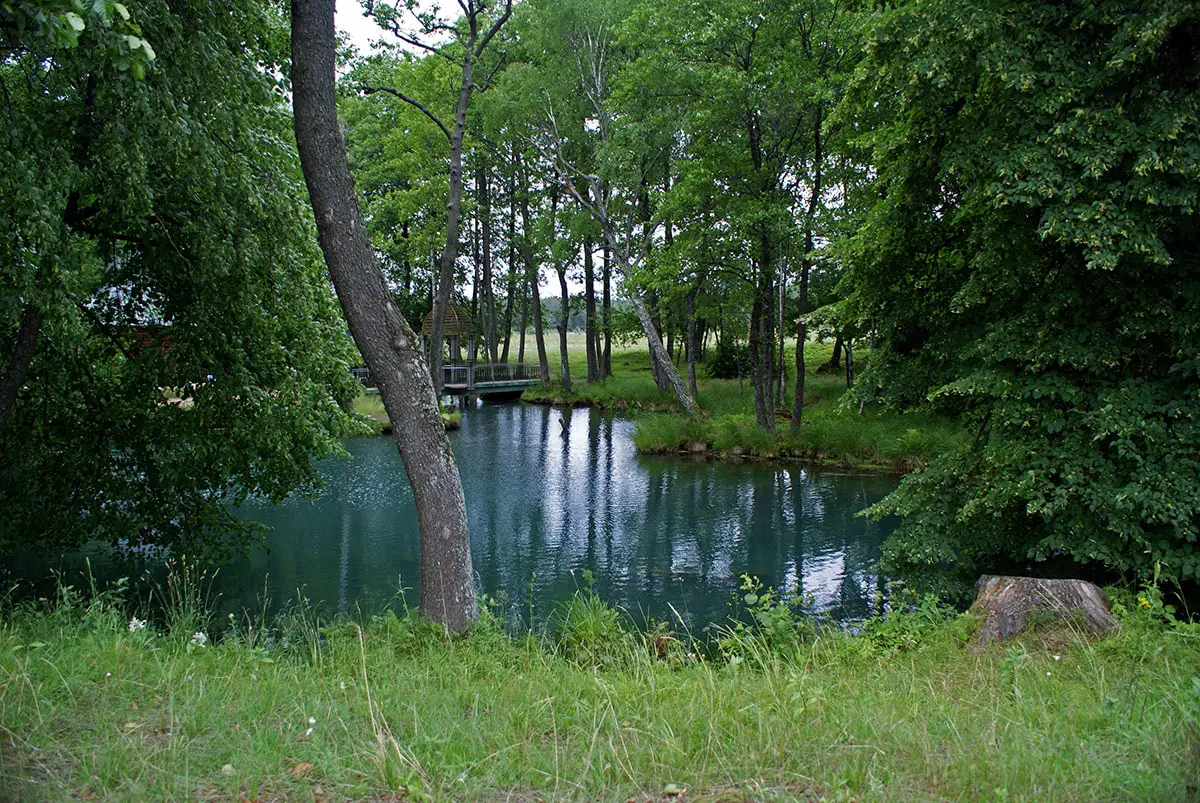
 In short
In short
The most powerful spring on East European Plain, most likely, is Blakitnaja Krynica. This Belarussian spring emits some 60 liters of crystal clear water every second and has served as a shrine for more than 1000 years.
 30.8%
30.8%
GPS coordinates
Location, address
Name in Belarussian
Alternate names
Average discharge
Temperature of water
Height
Map of the site
If you see this after your page is loaded completely, leafletJS files are missing.
 In detail
In detail
Spring is not too far from Sozh – a large tributary of Dnieper. It is located in a small grove of lime and oak trees.
Spring has formed a small pond, some 20 by 15 m large. This pond is filled with emerald-colored water. Springwater rises from a depth of some 150 – 200 m, but the pond is not too deep – up to 2.5 m. The deepest place is located at the mouth of the spring. This channel represents a kind of cave that has been measured up to the depth of 3 m, thus bringing the depth of the pool to 5.5 m.
Output of the spring is approximately 60 liters per second. While this is not too impressive figure if compared to the mighty springs of the Balkans, Caucasus, or Florida, this most likely is the most powerful spring in the extensive East European Plain.
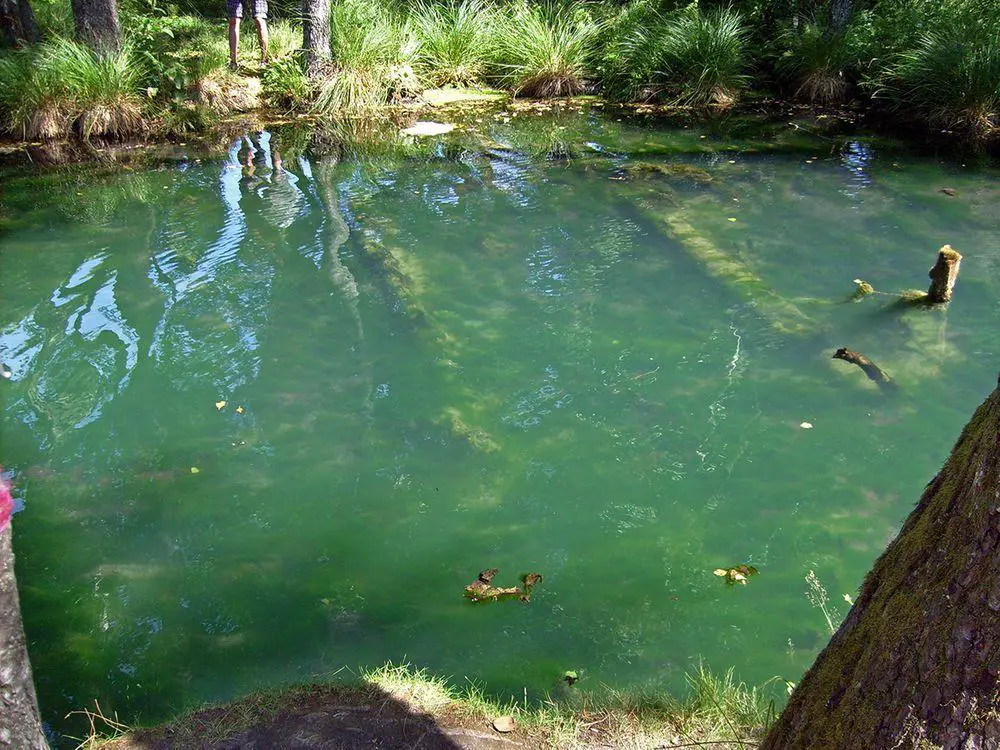
Water leaves the spring as a 3 – 8 m wide stream, which falls into Golub river and then – in Sozh.
Spring water is very clean, 5° C cold throughout the year, and rich with calcium bicarbonate.
Pond is rich with interesting types of vegetation including impressive, purple-colored algae formations.
History
Blakitnaja Krynica has been a sacred place since prehistoric times. According to legends, it was the most sacred place for the tribe of Radimichs and these people were baptized here more than 1000 years ago. Some tell that back then these springs were a lot more powerful and formed natural fountains.
Some information about the ancient beliefs is provided by a local legend that tells the story of three young people – Catherine, Stepan, and Makar. Catherine loved Stepan but Stepan was somewhat weaker than Makar. They competed for Catherine by throwing a large boulder – who will throw it further away, would marry Catherine. Makar won and Catherine, unwilling to live together with a man she did not love, threw herself in the water and disappeared. She was found dead 5 kilometers away, in the Blakitnaja Krynica.
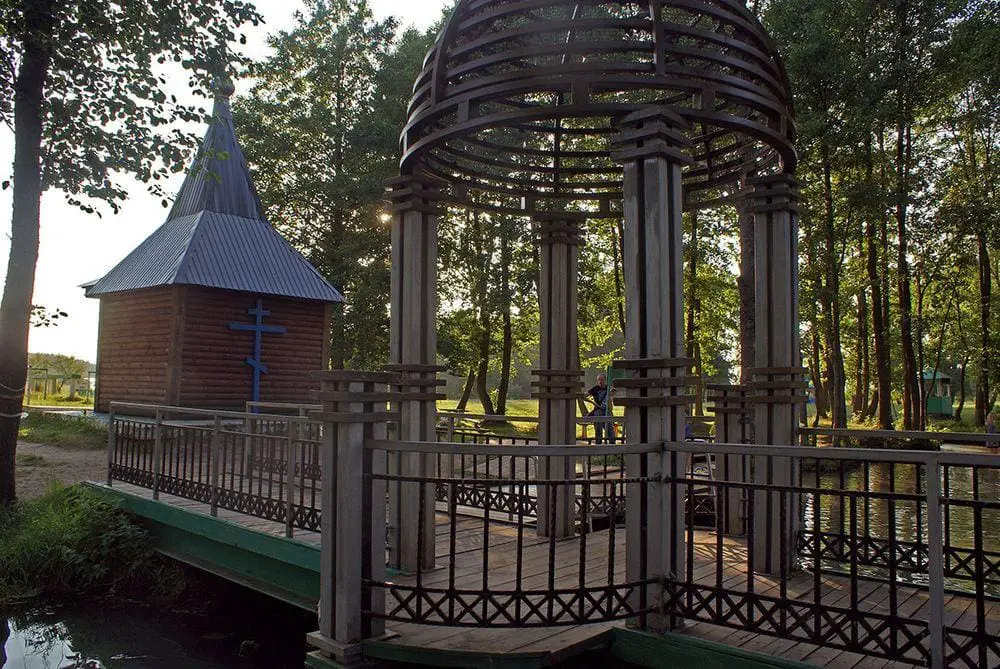
Although this legend seems to tell the story of local people, it may, in reality, show the interaction of prehistoric gods, the story behind the Pre-Christian legend of this ancient shrine.
Near the spring was a small village – Kliny, but it was abandoned after the Chornobyl catastrophe although the area has not been severely polluted.
Now Blakitnaja Krynica is an important Christian shrine and next to it is located a small Orthodox church. Every year on 14th August the spring is visited by thousands of pilgrims. In order to heal themselves many pilgrims drop their clothes and dive in the spring. After the bath, they leave old clothes on site.
Since 1985 Blakitnaja Krynica is a protected hydrological monument.
References
- Власов Б.П., Рудаковский И.А., Лихачев А.С. Характеристика родника “Голубая криница”. Белорусский государственный университет. Accessed on January 1, 2016.
 Linked articles
Linked articles
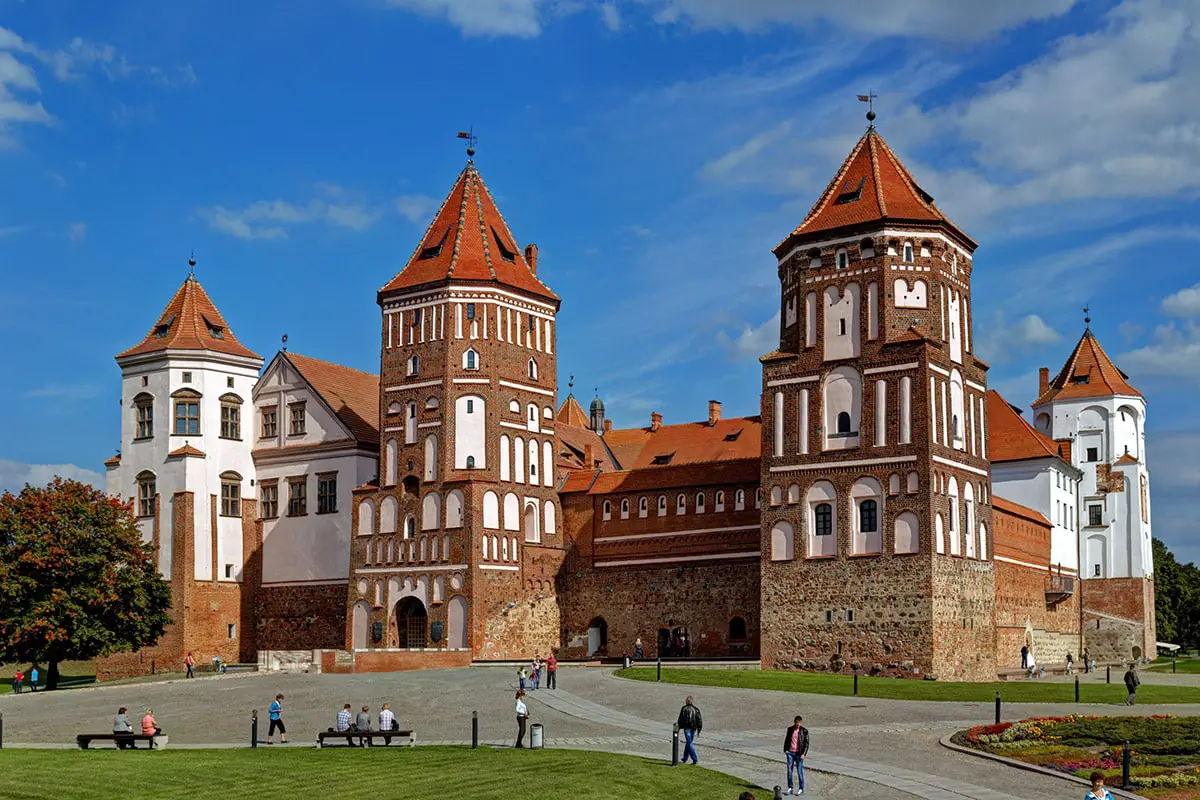
Wonders of Belarus
The most interesting landmarks in Belarus are the Churches of Kievan Rus’ times (11th – 12th centuries), Baroque churches, and several large castles.
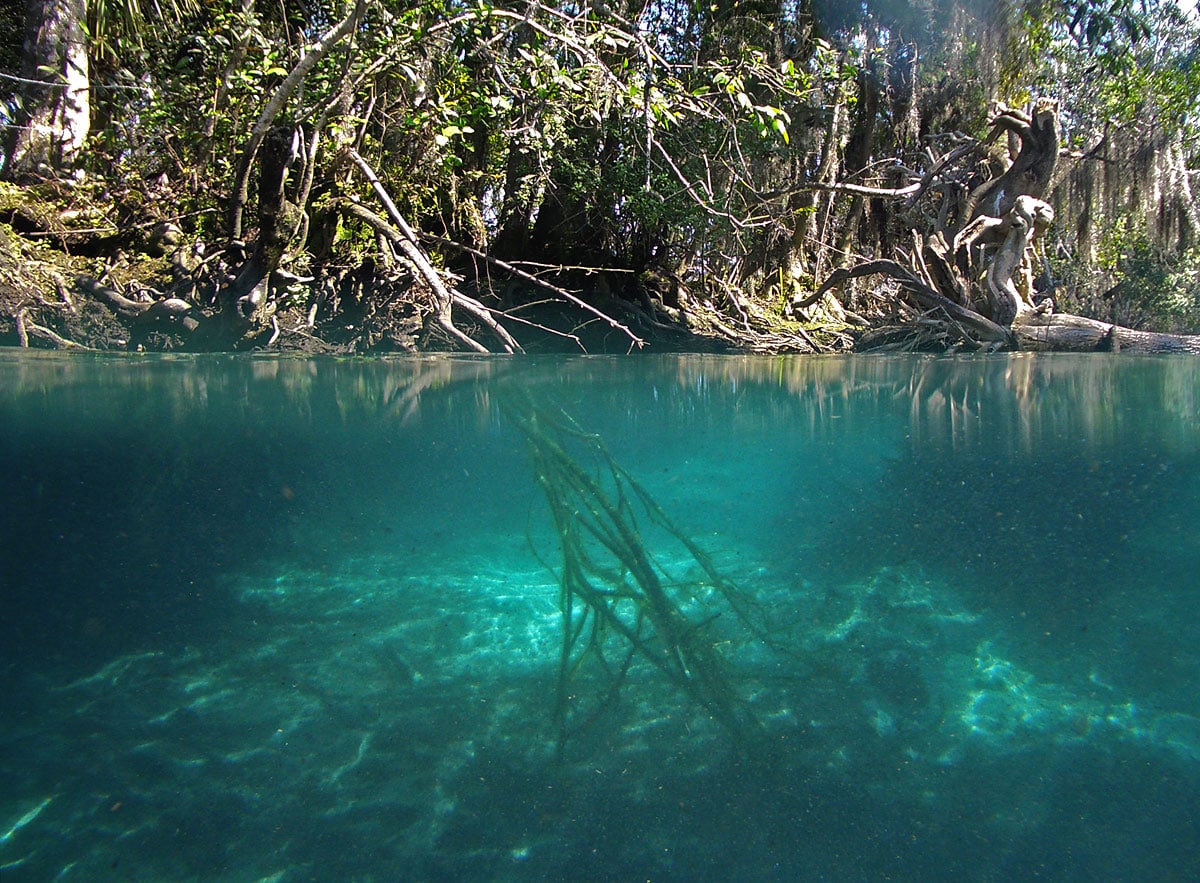
Springs
Powerful natural freshwater springs belong to the most fascinating monuments of nature. Even more exciting is the diversity of unusual springs – mineral springs, hot springs, submarine springs as well as the unusual black smokers. Especially beautiful are such natural rarities as travertine, silica, or salt terraces created by warm and hot springs and, especially, geysers.
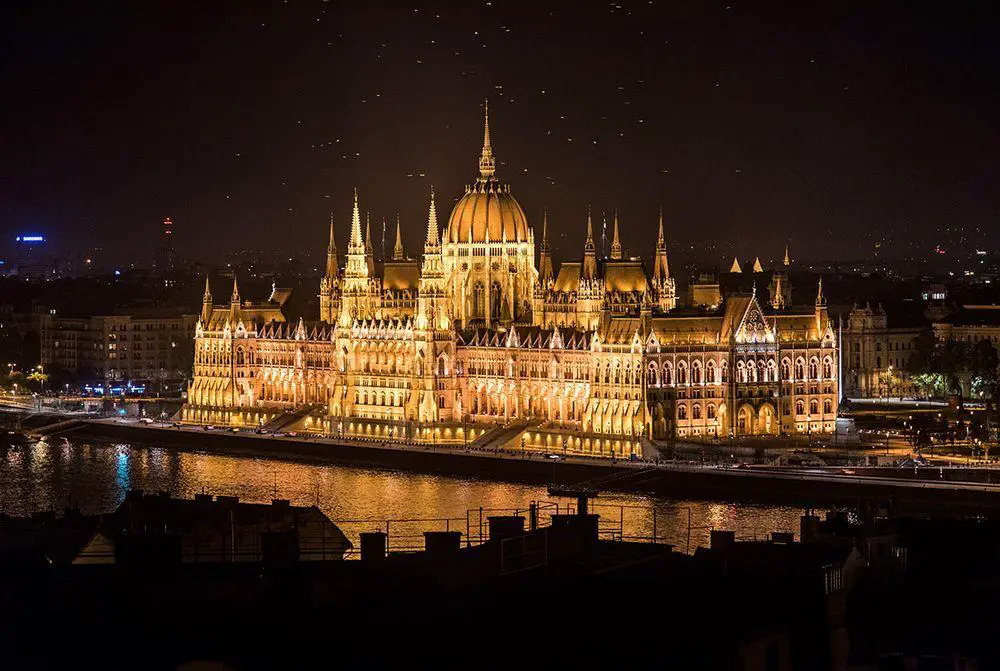
Wonders of Europe
The heritage of Europe is diverse and endlessly interesting. Incomparably rich is the wealth of European historical architecture, but this part of the world has exciting natural heritage and archaeological heritage as well.
 Recommended books
Recommended books
Karstology: Karsts, Caves and Springs
Karst landscapes are home to 25 percent of the world’s drinking water supplies, and in many countries, water supply is highly dependent on karst aquifers. Their unique structures, containing many voids, are a particular problem for building corporations and land developers. This book, written by the well-known karstologist Eric Gilli, presents a diverse range of chapters on the history of karstology, aquifers and their characterization, water supply management, coastal and submarine karsts, the evolution of karst and paleokarst, paleontology, tourism, and oil and mineral reserves.
Belarus – Culture Smart!
Culture Smart! provides essential information on attitudes, beliefs and behavior in different countries, ensuring that you arrive at your destination aware of basic manners, common courtesies, and sensitive issues. These concise guides tell you what to expect, how to behave, and how to establish a rapport with your hosts.


